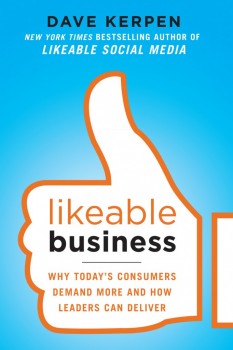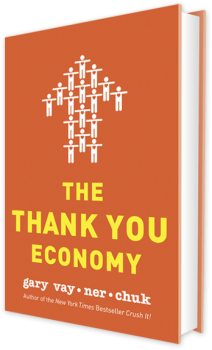 The world of business is changing fast. And it seems to be changing in two distinct directions. The first is going more mass. As businesses get larger, they are able to invest more in ways that drive prices down and make using them easier and easier. Think of Target, Walmart, Verizon, CVS and Amazon.
The world of business is changing fast. And it seems to be changing in two distinct directions. The first is going more mass. As businesses get larger, they are able to invest more in ways that drive prices down and make using them easier and easier. Think of Target, Walmart, Verizon, CVS and Amazon.
If I can buy something on Amazon, I probably will. They already have all my info in the system, the shipping is almost always free, and I can usually feel confident that I am getting the best price.
CVS (a U.S. pharmacy chain) is another example that I am less a fan of. I think of CVS’ business model as “the worst service in the best location.” Going into CVS is usually a horrible experience. While you can generally find whatever you are looking for, the checkout experience is ridiculously bad. They provide no system for how to queue, forcing customers to huddle awkwardly in the cramped spaces between aisles and nervously jockey for position while they wait. The wait is usually interminably long and the cashiers often less than friendly.
The sad thing is, I shop there all the time. As much as I try to avoid it, their convenient location, and the fact that no local pharmacies can compete, means it’s still the best place to grab a quick gallon of milk, a box of diapers or some cold medicine.
Seth Godin calls this “the race to the bottom.” Businesses get bigger and bigger allowing them to offer lower prices (and sometimes less quality) to more and more people. But the problem with the race to the bottom is (as Godin says) “you might win.”
The alternative is, of course, “the race to the top.” Rather than competing with mass businesses that distinguish themselves only by price and convenience, some businesses succeed by offering something unique, something special, something of value. They create art, Godin would say. 
Social Media expert, Gary Vaynerchuk refers to this evolution of the way we do business as “The Thank You Economy.” The internet is bringing back “small town rules” and allowing us to increasingly do business with people we know, people we trust, people we like. Vaynerchuk is a perfect example of this, as he took his family’s wine shop business online and made it into a $45 million empire by relentlessly responding to and connecting with his customers through social media tools such as Twitter.
So for the moment, businesses can choose. Do you want to race to the top, or race to the bottom? And what will you do when you get there? More and more people are realizing that, while you can be successful with either one of these strategies, “creating art” is much more fun.
For advice on racing to the top, businesses can turn to Dave Kerpen, another social media expert who has a book on Likeable Business: Why Today’s Consumers Demand More and How Leaders Can Deliver. Kerpen’s book is almost like a workbook with practical ideas for any business leader to implement to listen to customers, cultivate passion in a team, become stronger through simplicity and connect with authenticity.
My favorite parts of the book are hearing examples from Kerpen’s own evolution into a “likeable” leader. One of Kerpen’s early career stops was as a snack vendor at Fenway Park when he was in college. Kerpen was selling “Crunch ‘n Munch” and he did it with passion, singing, dancing, screaming and generally being a clown. But his passion paid off—not only in sales of Crunch ‘n Munch (he was making $400-$500 a night—not bad for a college student,) but also in reputation. He became known as the “Crunch ‘n Munch Guy” and was featured on all of the major news outlets in the area. Fans would actually ask him to autograph their Crunch ‘n Munch boxes!
He also tells about making a total ass of himself by being drunk on a reality television show. This was a low point for Kerpen, but the experience forced him to learn about honesty and transparency. Now he strives to live each day “as if 1200 cameras are watching.” In today’s world of technology and social media, this seems like good advice.
The point is, if you don’t want to race to the bottom by squeezing pennies out of your supply chain, you can race to the top by being more uniquely you. In a world where everyone is watching, and no one can do you better than you can, being your best self is a great strategy.
—
References and recommended reading:
Kerpen, D. (2013). Likeable Business: Why Today’s Consumers Demand More and How Leaders Can Deliver. McGraw-Hill.
Vaynerchuk, G. (2011). The Thank You Economy. Harper Business.
by Jeremy McCarthy
Follow the Psychology of Wellbeing on Facebook or @jeremymcc on twitter.


[…] on psychologyofwellbeing.com Share this:TwitterFacebookLike this:Me gusta […]
[…] on psychologyofwellbeing.com Like this:Like Loading… By egaurav in Strategy and Insights on March 26, 2013. ← Small […]